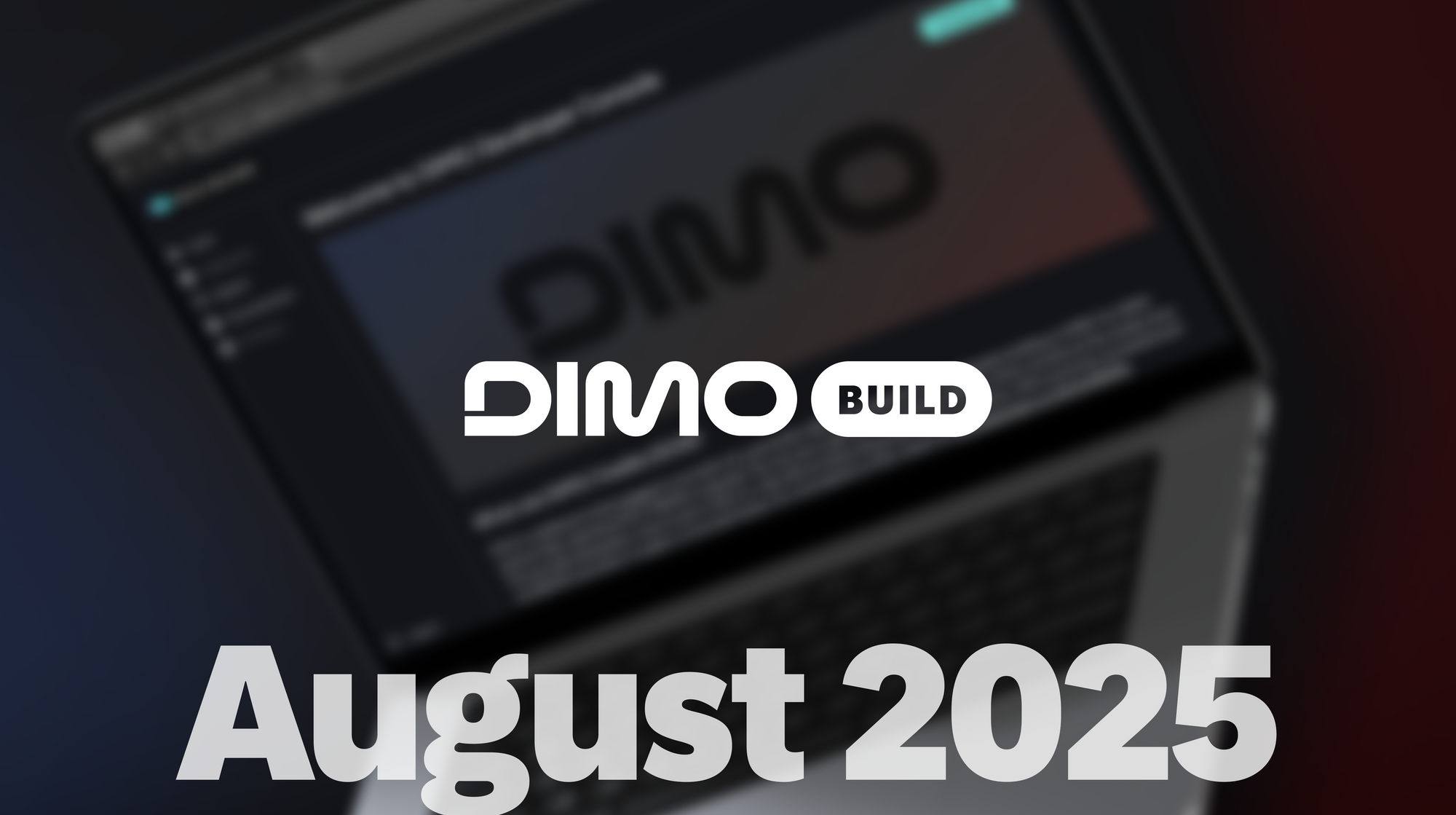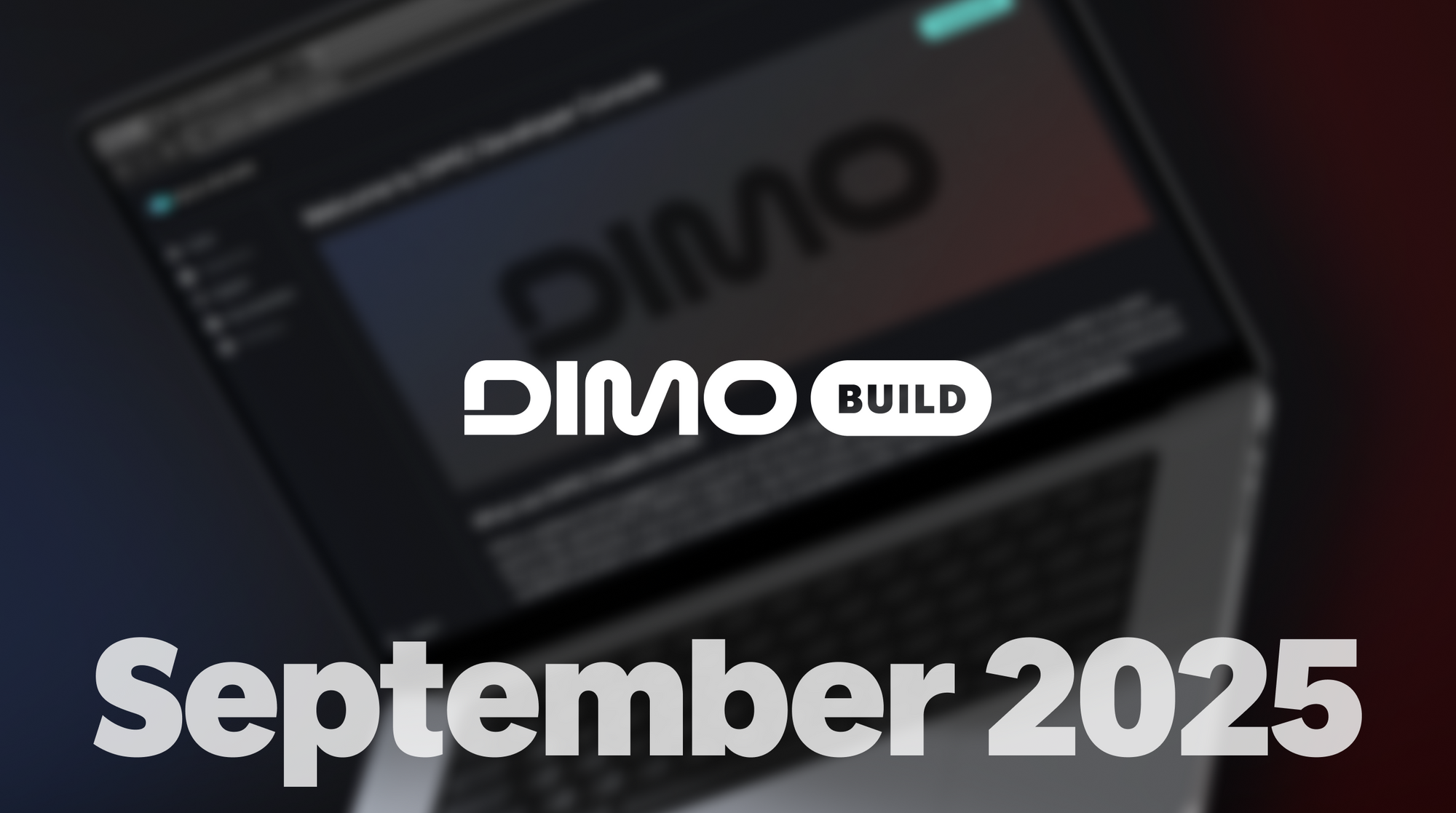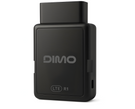Build on DIMO - August 2025
James Li, Barrett Kowalsky
August 25, 2025

In this edition of DIMO Build Developer Newsletter, we’re rolling out new tools to make building on DIMO faster and easier. Check out DIMO University on YouTube for step-by-step tutorials, explore our refreshed Webhooks for smoother integrations, and try the DIMO Developer Kit on Replit to launch a DIMO app in under 30 seconds.
📚 DIMO University - FREE Admission
We’re excited to introduce DIMO University, a dedicated learning hub for developers looking to build on the DIMO platform. The ongoing series walks through everything from the fundamentals of connecting vehicles and using the DIMO API, to more advanced workflows that help you integrate mobility data into your own apps and services. Each module is designed to shorten your learning curve and give you practical examples you can apply right away.
You can start exploring today via the DIMO University YouTube Playlist. We’ll be adding new sessions regularly, so it’s the best way to stay current on developer tools, SDKs, and best practices as the ecosystem expands.
☺️ Webhooks gets a Facelift 
Following the public beta launch of Webhooks back in May, we’ve been working on some refreshing new updates to make webhooks more customizable and even easier to set up than before. Recently renamed to the Vehicle Triggers API to make ways for the bright and shiny Vehicle Events (learn more here), DIMO webhooks allow your applications to receive notifications when specific vehicle conditions are met. With the latest release of the API, we’ve improved the experience in almost every way:
-
Clearer naming conventions in the webhook creation payload, including an option to set a displayName for easier management of your webhooks in the DIMO Developer Console.
-
Developers now have complete control over setting coolDownPeriod during webhook creation, instead of relying on a realtime, hourly, or daily setup.
-
Vehicles can now be subscribed to webhooks using vehicle tokenDIDs. You can also more easily batch-subscribe vehicles via the DIMO Developer Console.
-
Improved per-vehicle response payloads give you even more detailed information about the webhook that was triggered.
-
And a whole host of other improvements under the hood!
If you’re looking to get started with DIMO Webhooks, or want to read more about all the new changes & features, be sure to check out the official Vehicle Triggers API documentation here.
🏁 Fastlane: DIMO Developer Kit
We’re thrilled to share how our DIMO Developer Kit — a ready-to-run Replit template — makes it effortless to launch a functioning DIMO-integrated app in under 30 seconds. The kit comes pre-wired with the two essential SDKs: Login with DIMO on the client side for secure authentication, and the DIMO Data SDK on the server side for accessing live vehicle data from your app. Just remix the Replit, plug in your DIMO credentials, and you’re set to start building with minimal setup. For the more advanced users, you can also fork our GitHub repository of the Developer Kit.
Step 1: Remix
Hit Remix this app to fork your version of the kit.
Step 2: Update app with your secrets
Update secrets according to your Developer License setup:
-
Client ID: DIMO_CLIENT_ID & VITE_DIMO_CLIENT_ID
-
Redirect URI: DIMO_REDIRECT_URI & VITE_DIMO_REDIRECT_URI
-
API Key: DIMO_API_KEY
Live in Action
To see the Developer Kit in action, check out our blog post, Visualizing DIMO GPS Data: A Chat with Yev. In this Q&A with Yev, you’ll learn how we used the Kit to build a web app that visualizes GPS data in real time. Whether you’re experimenting with mobility data logging, mapping, or integrating live signals into your front-end, combining the Developer Kit with this walkthrough blog provides both the tools and the how-to narrative to accelerate your build.
🗝️ Granular Permissions on Login with DIMO
If you’ve been using Login with DIMO on your application, you’re likely familiar with using permissionTemplateId to request your users to share a pre-defined group of privileges with you. With the most recent updates to Login with DIMO, you now have the ability to request each available privilege individually using the permissions parameter, in either your URL or SDK configuration. These can be set by manually “switching” each privilege on (1) or off (0). Here’s a few examples to help explain how this works in practice:
-
&permissions=101 → Manually requiring privileges 1 and 3, but not 2. Also does not include privileges 4 through 8 by default.
-
&permissions=11111111 → Manually requiring all privileges.
-
&permissions=0001 → Manually requiring privilege 4, but no other privileges are included.
Need a bit of a refresher on how privileges work? Check out our docs here for the latest.
➕ Bonus: Event v.s. Triggers
Vehicle events is a powerful update on the DIMO Telemetry API that everyone was looking for. We’ve made it distinct from Vehicle Triggers (aka Webhooks) and here’s a quick comparison of the two:
|
Also Known As |
API Entry Point |
Mechanism |
|
|
Vehicle Events |
Events |
Telemetry (GraphQL) |
Specific events are detected by device, saved on Telemetry under Vehicle Events. Developers actively poll the API for data. |
|
Vehicle Triggers |
Webhooks |
Vehicle Triggers (REST) |
Triggers are defined by developers, where they also receive an HTTP call when criteria is met. |
🤗 Join the Community
Join the DIMO developer community to connect with other developers and the DIMO Team, ask questions, and showcase your work. To receive resources for launching your project with DIMO, submit a proposal to the DIMO Ignite Grants Program today.




